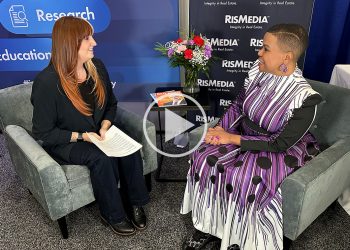RISMEDIA, July 10, 2009-Price declines and low interest rates are motivating millions of home buyers to shop for bargains in the most affordable housing market in 28 years(1), yet at the same time only one-in-ten of today’s home owners say they have delayed selling their home due to those same market conditions, according to the new national Realtor.com(R) Homeownership Survey.
Based on the Realtor.com survey, affordability is clearly driving more than two-thirds (65.2%) of potential buyers back into today’s housing market. Nearly one of five prospective buyers (19.6%) say foreclosure bargains in their communities would motivate them to purchase a home, the most important reason they’re interested in buying in the near future. An additional 15.5% said they’re motivated to buy soon because they think prices are as low as they will go, and another 15.5% said they’re motivated to buy before interest rates rise. For 14.6% of first time home buyers, the Federal $8,000 tax credit is the impetus to purchase a new home in the future.
The survey also found most Americans are not aware of how affordable homes are becoming in today’s fast-changing housing market. More than three-quarters (76.4%) of consumers think a median income family can afford only 50% or fewer of the homes for sale in their area. However, in reality, a family earning the national median income of $53,182 can afford nearly 75% of the current homes for sale on Realtor.com. In the past year, the Housing Affordability Index maintained by the National Association of Realtors has increased 29% overall and 19% for first-time home buyers, and is higher now than at any time in the 28 year history of the index.
“Value is clearly motivating potential home buyers, and today’s new level of affordability is still an under-appreciated reality that needs to be explored,” said REALTOR.com President, Errol Samuelson. “The variety and quality of homes currently within reach of the average American family is much greater than most people realize. Making credit available to responsible borrowers and building consumer confidence in the economy are now key factors in restoring vitality to the nation’s housing market.”
Samuelson continues by explaining that the survey found that while lower prices are motivating buyers, they’re also causing one-in-ten current owners to delay selling homes they currently own. At the same time, 87% of all Americans are paying more (44.7%) or the same amount of attention (42.3%) to home values as compared to a year ago.
Foreclosures Today
Distressed sales of foreclosures and short sales, which constitute nearly half of all existing home sales today,(3) and place downward pressure on prices, are not universally popular with buyers. Two-thirds of those surveyed (66.3%) said they are not likely to consider buying a foreclosure in the future. However, if sellers were willing to pay closing costs, 23.9% would be motivated to purchase foreclosures, and 19.5% said they would buy a foreclosure if there was a higher level of certainty related to home repairs required to make the home “move-in” ready.
Current fear of foreclosure has lessened since the last Realtor.com Homeownership Survey in March 2009, when 52.5% of respondents expressed concern that they or someone they know may face foreclosure in the next 6-12 months. In this latest survey, the number of home owners concerned about foreclosure dropped 8.7% compared to March 2009, and the number of owners feeling “not very concerned” or “not concerned at all” increased by 8.4% combined in the past three months.
In addition, of the participants in this newest survey who say they or someone they know may be facing foreclosure in the near future, one out of five (20.1%) haven’t taken any steps to resolve their situation, while 22.4% haven’t taken steps yet but plan to do something before the Making Homes Affordable refinance program expires on June 10th next year. Approximately a third (37.2%) have talked to their lenders about a loan modification, 43.9% have talked with a lender about refinancing, and 25.9% have or are planning to refinance under the Administration’s Making Homes Affordable programs.
Based on the survey, the Administration’s Making Homes Affordable programs to reduce foreclosures are not necessarily popular with the majority of survey respondents. Forty-one percent said the administration’s program to reduce the number of foreclosures is not working, 27.8% said they felt the program is working, 3.3% feel it’s too soon to tell and 26.7% don’t know. The programs were designed to help 2 to 4 million homeowners avoid foreclosure through home loan modifications, and another 5 to 7 million through mortgage refinancing.
The Economy and Refinancing
The overall economic situation continues to affect both buyers and sellers in today’s housing market. The greatest barriers to homeownership today, according to survey respondents, are concerns related to employment and the ability to make mortgage payments, especially among respondents ages 25-34 (31.1%) and ages 35-49 (30.8%). The median age of a first time home buyer is 30.(4) A seller’s inability to sell their current home (16.1%) and lack of available financing (15.4%) to purchase a home were also cited as reasons why buyers and sellers have held back and stayed out of the market.
The June 2009, Realtor.com Homeownership Survey found current economic conditions may be having an impact on how the 29.7% of homeowners who say they refinanced their mortgage in 2009 are spending their refinancing gains. Survey results indicate homeowners who’ve recently refinanced are using the monthly savings as much to pay their living expenses as to remodel or repair their homes. Twelve point three percent are using the proceeds to remodel their homes and 12.2% are using the money to pay living expenses, while 10.7% are saving their monthly payment savings for retirement.
This survey, the fourth in Realtor.com’s series of quarterly Homeownership Surveys, is based on random telephone interviews conducted from June 19-21, 2009. A total of 1,004 interviews were completed, with approximately 500 female adults and 500 male adults. The margin of error on weighted data is + or – 3 at a 95% level of confidence. The survey was conducted by Omnitel, in a weekly national telephone omnibus service of GfK Custom Research North America. The raw data are weighted by a custom designed computer program, which automatically develops a weighting factor for each respondent. This procedure employs five variables: age, sex, education, race and geographic region. Each interview is assigned a single weight derived from the relationship between the actual proportion of the population with its specific combination of age, sex, education, race and geographic characteristics and the proportion in our sample that week. Tabular results show both weighted and unweighted bases for these demographic variables.
For more information, visit www.REALTOR.com.










